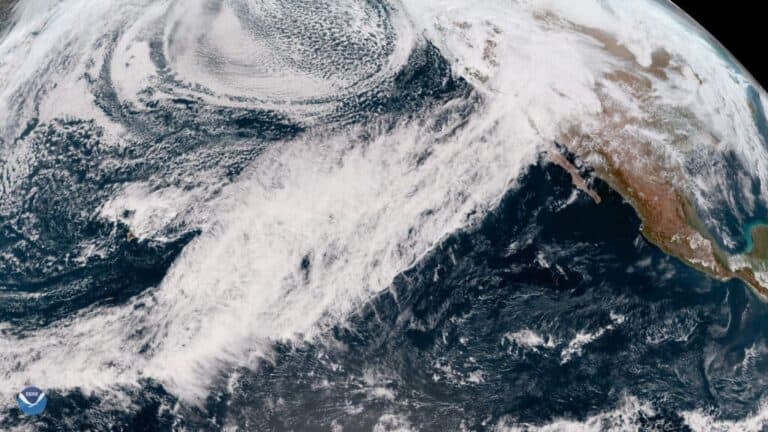Atmospheric rivers are essential for the transportation of precipitation occurring in the Northern and Southern Hemisphere. The rapidly changing climate is causing shifts in these long, flowing regions of the atmosphere, resulting in an increasing number of extreme weather events that bring about destruction across the world.
What Are Atmospheric Rivers?
Atmospheric rivers occur in the Earth’s atmosphere as a concentrated band of moisture and wind that transports large amounts of water vapour and are the largest and most important transport mechanisms of freshwater on Earth. Similar to terrestrial rivers, atmospheric rivers can vary in strength and size and can occur both in the Northern hemisphere – typically between December and February – and in the Southern hemisphere – typically between June and August, when extratropical cyclones are prevalent.
In order for atmospheric rivers to form, the following conditions are required:
Strong low level winds that act as a highway for water vapour to be transported across. The jet streams in the Northern and Southern hemispheres act as these highways, with speeds reaching as high as 442km/h (275mph).
High moisture levels, which are a prerequisite for precipitation to occur.
Orographic life, a phenomenon that occurs when an air mass moves from a low to a higher elevation as it moved over rising terrain, such as a mountain. As the air mass gains altitude, it quickly cools down, raising humidity in the air and eventually leading to the formation of clouds and, under the right conditions, precipitations.
The Advantages and Disadvantages of Atmospheric Rivers
Atmospheric rivers can have different impacts on ecosystems and global freshwater supply. Some aspects of atmospheric rivers are important as they provide water security for communities and keep the water cycle in balance.
Advantages of atmospheric rivers include the redistribution of […]
Full article: earth.org

